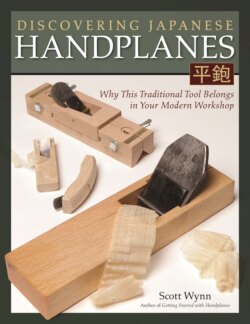Читать книгу Discovering Japanese Handplanes - Scott Wynn - Страница 12
На сайте Литреса книга снята с продажи.
RELIABILITY
ОглавлениеJapanese planes have a reputation for having to be tuned a lot. I have not found them to move any more than any other wood plane, but, because I expect a high degree of performance from my planes, I always check them before using. You can greatly reduce maintenance by proper storage.
When you are done using the plane, or at the end of the day, whichever comes first, always fully loosen the blade and then gently tap it and the chipbreaker back in just enough to keep them from falling out when you pick the plane up. Store it in a drawer or cabinet closed off to reduce temperature and humidity swings. (It is always a good idea to keep your shop at a consistent humidity as best you can year round, anyway.) Traditional houses and workshops in Japan were wide open to the air with only a hibachi for heat. Without central heating, and both summers and winters being humid, wide swings in humidity were unknown. (For that matter, the same was true in Europe until barely 30 years ago.)
